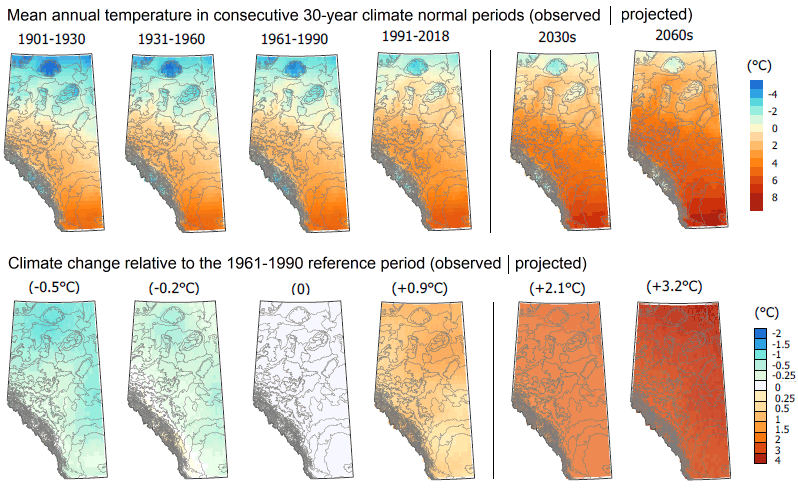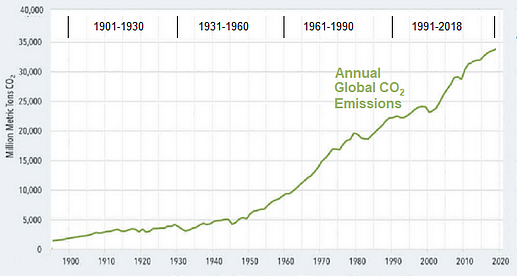Alberta Seed Source Selection Tool (Alberta3ST)
Alpha version, Feb. 15, 2020, by Zihaohan Sang ✉ and Andreas Hamann ✉.
Home | Instructions
About
Alberta3ST is a web-based software tool that can be used to select seed sources for reforestation in Alberta. The goal is to find reforestation stock that grows well and at the same time matches planting environments under observed and projected climate change. To the best of our knowledge, Alberta3ST is functional, but would benefit from several approaches to broaden the choice of eligible seedlots. At the moment, we only consider seed sources that have previously been tested in a specified target region for reforestation, and this alpha-version is only based on provenance trials and genetic progeny testing for white spruce, Engelmann spruce and their hybrids. More species and support for optimal species selection may be added in the future.
Get started
1. Read the Instructions on how to use this tool.
2. Select a target region in Alberta for reforestation (Region G2 and I are examples with many tested seed sources):
Region D | Region D1 | Region E | Region E1 | Region E2 | Region G1 | Region G2 | Region H | Region I
Background and rationale
Adapting natural resource mananagement to new environmental realities is becoming ever more important, as efforts to limit greenhouse gas emissions appear to fall short. Moving seed sources poleward and to higher elevations, where planting environments are cooler, would help to compensate for climate warming that has already occured. This will ensure that climatic tolerances of species and locally adapted tree populations match current and future growing environments, thereby maintating forest health and productivity.
Observed climate change in Alberta (two left panels below) amounts to approximately 1.4°C relative to the beginning of the century (Wang et al. 2016), and recent decades of high annual CO2 emissions (graph at bottom) make it likely that climate warming will continue as projected (two upper right panels below). The 2030s and 2060s projections that we use for Alberta3ST represent CMIP5 multimodel forecasts based on a moderate RCP4.5 emission scenario. See Wang et al. (2016) for details.


Methods
The work builds on estimation of height growth and breeding values of seed sources by Gray et al. (2016). These breeding values have been derived under field testing conditions that primarily represent the 1991-2018 climate period (2000s). However, since evolution is a slow process, we can assume that seed sources are genetically adapted to pre-indistrial climate conditions, here represented as 1901-1930 climate.
Alberta3ST determines suitability of seed sources by calculating a multivariate climate distance between seed collection locations (1901-1930 climate) and current and future planting environments (2000s, 2030s, 2060s). We follow methodology on assessing multivariate climate similarity by O'Neill et al. (2017). The historical climate of seed source locations and the current and future climate of planting regions of Alberta were estimated with ClimateNA (Wang et al. 2016).
Limitations & future work
At the moment, we only consider seed sources that have previously been tested in a specified target region for reforestation. That does not necessarily make sense under climate change. Future versions may include the option:
Include seed sources tested in other regions, and slider tools for the criteria:  Projected growth or breeding value under 2030s / 2060s climate. These extensions would require response function and/or transfer function modeling (e.g. O'Neill et al. 2017).
Projected growth or breeding value under 2030s / 2060s climate. These extensions would require response function and/or transfer function modeling (e.g. O'Neill et al. 2017).
Additional species and support for optimal species selection may be added in the future. Sliders could also be added for any additional benefits or risk factors that can be quantified or estimated for seed sources (such as drought resistance, e.g. Sang et al 2019). Similarly, risk factors associated with the transfer to new environments could be controlled via sliders for environmental criteria (such as increased exposure to frost, e.g. Sang et al 2020).
References
Gray, L. K., Hamann, A., John, S., Rweyongeza, D., Barnhardt, L., & Thomas, B. R. (2016). Climate change risk management in tree improvement programs: Selection and movement of genotypes. Tree Genetics & Genomes, 12, 23 (PDF)
O’Neill, G., Wang, T., Ukrainetz, N., Charleson, L., McAuley, L., Yanchuk, A., & Zedel, S. (2017). A proposed climate-based seed transfer system for British Columbia. B.C. Tech. Rep. 099. Gov. of BC, Victoria, B.C. (PDF)
Sang, Z, Sebastian-Azcona, J., Hamann, A., Menzel, A., Hacke, U.G. (2019). Adaptive limitations of white spruce populations to drought imply vulnerability to climate change in its western range. Evolutionary Applications 12: 1850–1860. (PDF)
Sang, Z, Hamann, A. (2020). Should we plant trees further north or at higher elevation to compensate for climate warming? An evaluation of frost risks. Unpublished manuscript (PDF)
Wang, T., Hamann, A., Spittlehouse, D., & Carroll, C. (2016). Locally downscaled and spatially customizable climate data for historical and future periods for North America. PLoS One, 11(6): e0156720. (PDF)

This work is licensed under a Creative Commons Attribution-NonCommercial-ShareAlike 4.0 International License.